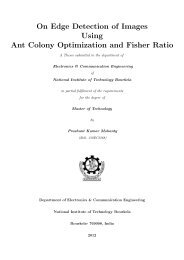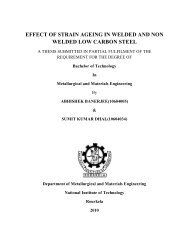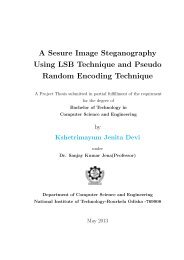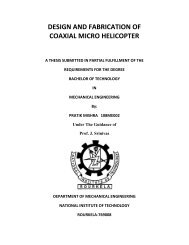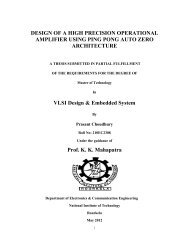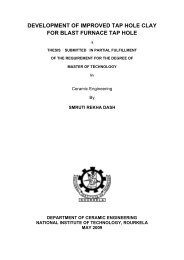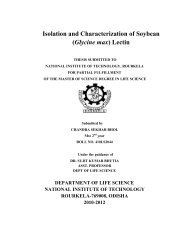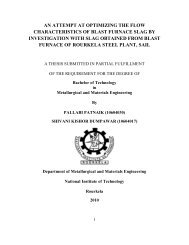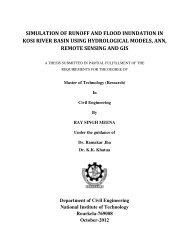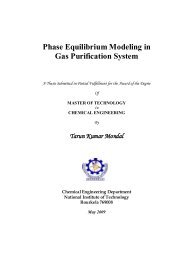analysis of transient heat conduction in different geometries - ethesis ...
analysis of transient heat conduction in different geometries - ethesis ...
analysis of transient heat conduction in different geometries - ethesis ...
Create successful ePaper yourself
Turn your PDF publications into a flip-book with our unique Google optimized e-Paper software.
2.1 INTRODUCTION<br />
CHAPTER 2<br />
LITERATURE SURVEY<br />
Heat <strong>conduction</strong> is <strong>in</strong>creas<strong>in</strong>gly important <strong>in</strong> various areas, namely <strong>in</strong> the earth sciences, and <strong>in</strong><br />
many other evolv<strong>in</strong>g areas <strong>of</strong> thermal <strong>analysis</strong>. A common example <strong>of</strong> <strong>heat</strong> <strong>conduction</strong> is <strong>heat</strong><strong>in</strong>g<br />
an object <strong>in</strong> an oven or furnace. The material rema<strong>in</strong>s stationary throughout, neglect<strong>in</strong>g thermal<br />
expansion, as the <strong>heat</strong> diffuses <strong>in</strong>ward to <strong>in</strong>crease its temperature. The importance <strong>of</strong> such<br />
conditions leads to analyze the temperature field by employ<strong>in</strong>g sophisticated mathematical and<br />
advanced numerical tools.<br />
The section considers the various solution methodologies used to obta<strong>in</strong> the temperature field.<br />
The objective <strong>of</strong> <strong>conduction</strong> <strong>analysis</strong> is to determ<strong>in</strong>e the temperature field <strong>in</strong> a body and how the<br />
temperature with<strong>in</strong> the portion <strong>of</strong> the body. The temperature field usually depends on boundary<br />
conditions, <strong>in</strong>itial condition, material properties and geometry <strong>of</strong> the body.<br />
Why one need to know temperature field. To compute the <strong>heat</strong> flux at any location, compute<br />
thermal stress, expansion, deflection, design <strong>in</strong>sulation thickness, <strong>heat</strong> treatment method, these<br />
all <strong>analysis</strong> leads to know the temperature field.<br />
The solution <strong>of</strong> <strong>conduction</strong> problems <strong>in</strong>volves the functional dependence <strong>of</strong> temperature on space<br />
and time coord<strong>in</strong>ate. Obta<strong>in</strong><strong>in</strong>g a solution means determ<strong>in</strong><strong>in</strong>g a temperature distribution which is<br />
consistent with the conditions on the boundaries and also consistent with any specified<br />
constra<strong>in</strong>ts <strong>in</strong>ternal to the region. P. Keshavarz Æ M. Taheri[1] and Jian Su [2] have obta<strong>in</strong>ed<br />
this type <strong>of</strong> solution.<br />
2.2 ANALYTICAL SOLUTIONS<br />
Keshavarz and Taheri [1] have analyzed the <strong>transient</strong> one-dimensional <strong>heat</strong> <strong>conduction</strong> <strong>of</strong><br />
slab/rod by employ<strong>in</strong>g polynomial approximation method. In their paper, an improved lumped<br />
model is be<strong>in</strong>g implemented for a typical long slab, long cyl<strong>in</strong>der and sphere. It has been shown<br />
that <strong>in</strong> comparison to a f<strong>in</strong>ite difference solution, the improved model is able to calculate average<br />
10





